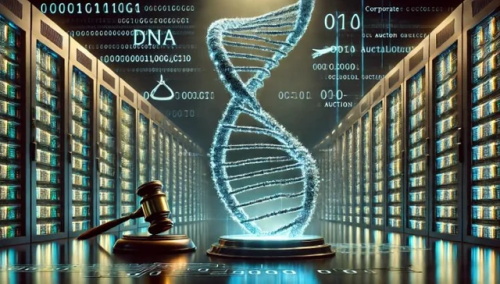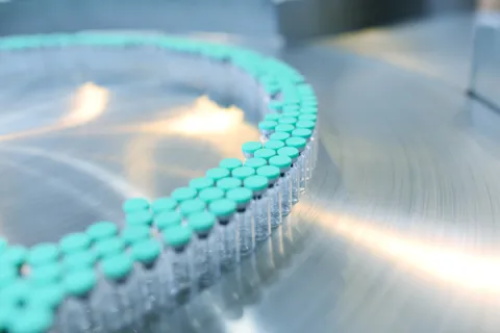Gene Bank Auctions from Bankrupt Biotech Firms: A New Path for Intangible Asset Disposal

When a company undergoes bankruptcy, physical assets such as buildings, equipment, and inventory are relatively straightforward to evaluate and sell. However, intangible assets—particularly in biotech firms, like gene banks, patents, and cell lines—remain far more complex, vague, and often contentious to value and transfer. Yet a quiet transformation is underway: gene bank auctions are emerging as a novel method for dealing with intangible assets in corporate insolvency.
The Old Dilemma of Intangible Asset Disposal
In conventional bankruptcy proceedings, intellectual property and proprietary technologies are frequently undervalued or go unsold due to the absence of transparent market pricing mechanisms and established appraisal systems. Some of these assets may hold substantial worth in specific industries or contexts, but rigid auction procedures fail to reflect that value. Other flexible models—such as negotiated transfers or research collaborations—are rarely considered, limiting the realization of their full potential.
This is particularly true in the biotech sector, where intangible assets often include cell lines, DNA samples, and genomic databases. These resources are highly specialized and influenced by factors such as storage conditions, sample freshness, and legal compliance. Their liquidity is low and potential buyers are few, which further complicates the monetization process.
What Is a Gene Bank—and Why Is It So Valuable?
A gene bank is essentially a vast library, but instead of books, it holds the code of life: DNA sequences. These databases unlock genetic secrets and provide essential data for advancing disease treatment, drug discovery, and personalized medicine.
For example, researchers can use gene banks to identify genetic risk factors for Alzheimer’s disease, detect cancer-related mutations, or develop tailored therapies based on a person’s genetic profile. Gene data also facilitates drug target discovery and helps researchers understand mechanisms of drug response, accelerating pharmaceutical development. In some cases, specific gene sequences can even be patented, turning them into valuable intellectual property with commercial and competitive significance.
Although invisible and intangible, gene banks are far from abstract—they’re potent scientific and commercial resources, akin to digital goldmines for biotech firms.
Gene Assets in Bankruptcy: Complicated but Increasingly Marketable
As promising as they are, gene-based assets come with major challenges. “Living assets” such as genetic samples or cell cultures require controlled environments and routine maintenance; a broken cold chain or mismanagement can render them useless. Furthermore, their transfer may require navigating a maze of legal frameworks—covering intellectual property, biosecurity, and data privacy laws—often demanding months of regulatory review.
Ethical concerns also loom large. Were users properly informed and their consent obtained? Could the data enable genetic discrimination? These unresolved questions add further complexity and public concern.
Nevertheless, the market is shifting. Investors and institutions are beginning to see the value in these genomic data sets. High-profile auction cases are pushing this method of asset disposal into the spotlight.
The 23andMe Auction: A Turning Point
On June 13, 2025, a milestone event caught industry-wide attention: genetic testing pioneer 23andMe filed for bankruptcy and publicly auctioned its core assets, including its vast genomic database. Once valued at $6 billion, the company ultimately sold most of its assets for $305 million to the TTAM Institute, founded by its former CEO Anne Wojcicki.
23andMe’s rise and fall was tightly tied to its genetic offerings. Since launching in 2006, it brought affordable DNA testing to the consumer market and amassed data from over 15 million individuals—making it one of the world’s largest personal genomics databases. Backed by major investors like Google and Sequoia, it seemed unstoppable.
That changed in 2023, when a cyberattack exposed genetic data of 7 million users. The breach led to a $30 million settlement and caused severe reputational damage. Its market share plunged from 45% to 15%, and with mounting losses, the company eventually collapsed.
Yet the data it left behind remains highly valuable. Its rarity, scientific relevance, and commercial applications made it a sought-after asset—enabling a successful auction that recouped some value for creditors and stakeholders.
Gene Bank Auctions: Unlocking New Avenues for Tech Asset Liquidation?
Unlike traditional bankruptcy auctions, gene bank sales aren’t just about recouping cash. They represent a potential blueprint for handling intangible tech assets. Open bidding can better reflect market value and attract buyers across sectors such as healthcare, data analytics, and insurance—supporting the commercial application of scientific knowledge.
Still, this shouldn’t be viewed through rose-colored glasses. There’s no global legal framework specifically governing genomic data transactions, and current practices are rife with legal gaps and ethical ambiguity. In auctions driven solely by price, the winner may not be the party with the strongest data protections, raising concerns about future misuse.
The 2024 collapse of the UK’s Atlas Biomed illustrates the risks. The DNA testing company shut down without warning. Clients lost access to their data and had no clarity about how it was ultimately used or stored. Even appeals to the UK’s data protection authority yielded no concrete answers—highlighting weak regulatory oversight and consumer vulnerability.
Hard Lessons from a Biotech Bankruptcy Wave
As the biotech investment boom begins to cool, more startups and genetic testing companies may face similar insolvency. This raises urgent questions: How should their “data legacies” be handled? How can we accurately appraise gene banks? How do we balance commercialization with ethical safeguards?
Auctioning gene banks might be just the beginning. But it reminds us that in this era where data is a core asset—even the code of life can be commodified. And our understanding, governance, and protection of that code remain far from adequate.



